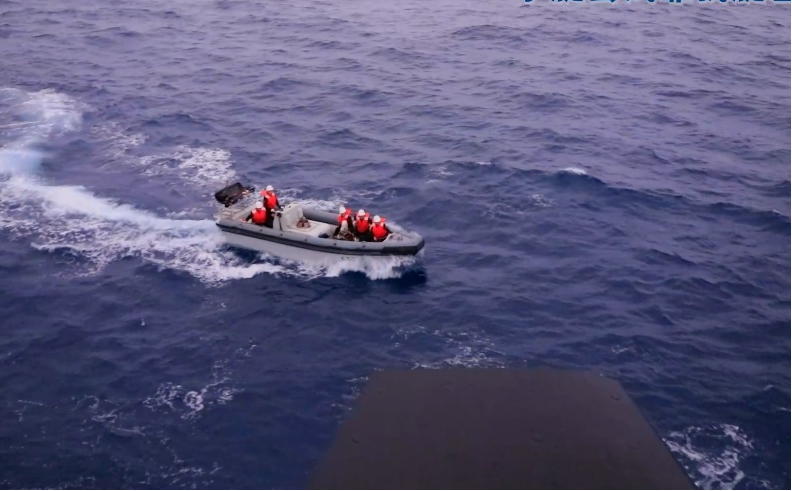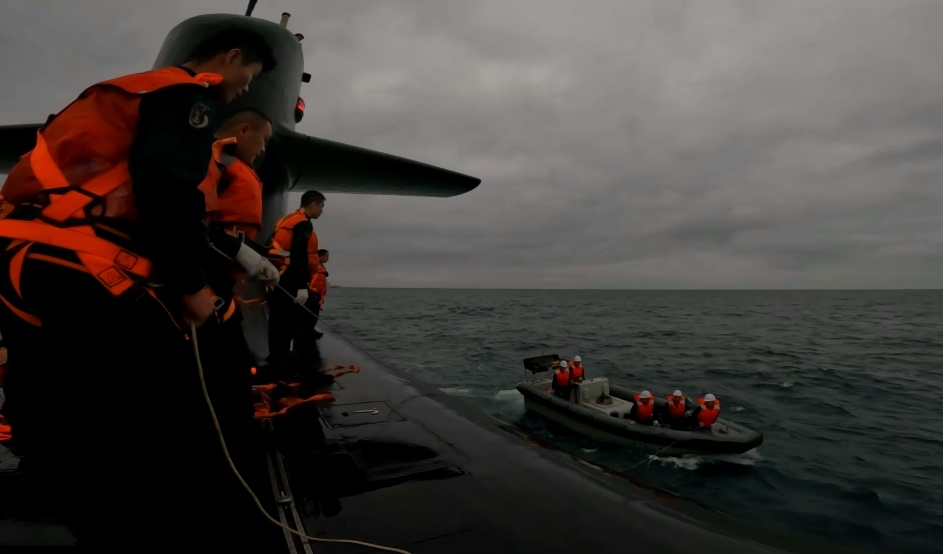By Li Yun, Wang Jian and Li Hao
It was not a drill. At 2 am one day not long ago, a submarine of the Chinese PLA Navy was quietly conducting combat readiness training underwater in the deep sea of a certain area. Dong Changchuan, a sonar technician assigned to the submarine, suddenly felt a sharp pain in his abdomen. He tried to hold back, but the pain became more and more serious with the convulsions, and his whole body began to sweat.
Sun Shitao, a military doctor aboard the submarine, first ruled out the possibility of acute pancreatitis and appendicitis based on his experience and Dong's symptoms. Dong was preliminarily diagnosed with left kidney stones.
Transfusion, medication, and physical therapy, different treatments had been taken one after another in the cramped space of the submarine, but none of them was effective. Dong's face had turned pale, his clothes were soaked in sweat, and he was restless. It may lead to hydronephrosis and renal failure if this continues.
Seeing this, the commanding officer of the submarine decided to make emergency surface and request to evacuate Dong.
At around 4 am, the submarine surfaced and the sailors began the transfer preparation.
Superior command post replied that a guided missile frigate training in surrounding waters was about to arrive, and the patient could be transferred to the ship for further observation and treatment.
At around 5 am, after sailing at high speed for several hours, the frigate arrived at the designated sea area. As soon as they arrived, the sailors aboard the frigate lowered the boat and quickly approached the submarine.

The small boat released from the frigate arrives near the submarine. (Photo by Li Hao)
The boat was floating and shaking up and down by nearly two meters because of the large swell. The boat made several attempts from different angles and finally successfully approached the submarine. Dong was safely transferred to the boat thanks to efforts from both sides.
With no time to chat, sailors waved goodbye. The boat turned around and left, and the submarine dived again to continue the follow-up training mission.
The remote video consultation for Dong was carried out on the frigate. Under the guidance of medical experts, Dong was diagnosed with kidney stones and received further treatment onboard to relieve pain.
The baton of saving life continued to be passed. The shipborne helicopter completed preparations for take-off on the flight deck of the frigate.
At around 6 pm, Dong's condition did not improve effectively. Under the escort of military doctor Li Qi, the shipborne helicopter took off and sent Dong from the mission sea area to an airport.
The helicopter landed smoothly after flying for two hours. The ambulance and medical staff picked up Dong on the tarmac and transferred him to the military hospital.
The stones in Dong's kidney were successfully crushed and passed out of his body that night.
At this point, the sea and air relay rescue spanning more than 100 nautical miles for nearly 20 hours successfully completed. The submarine, boat, frigate, helicopter, and ambulance have built a life passage for Dong between sea and air.

Soldiers work together to transport the patient. (Photo by Li Hao)













